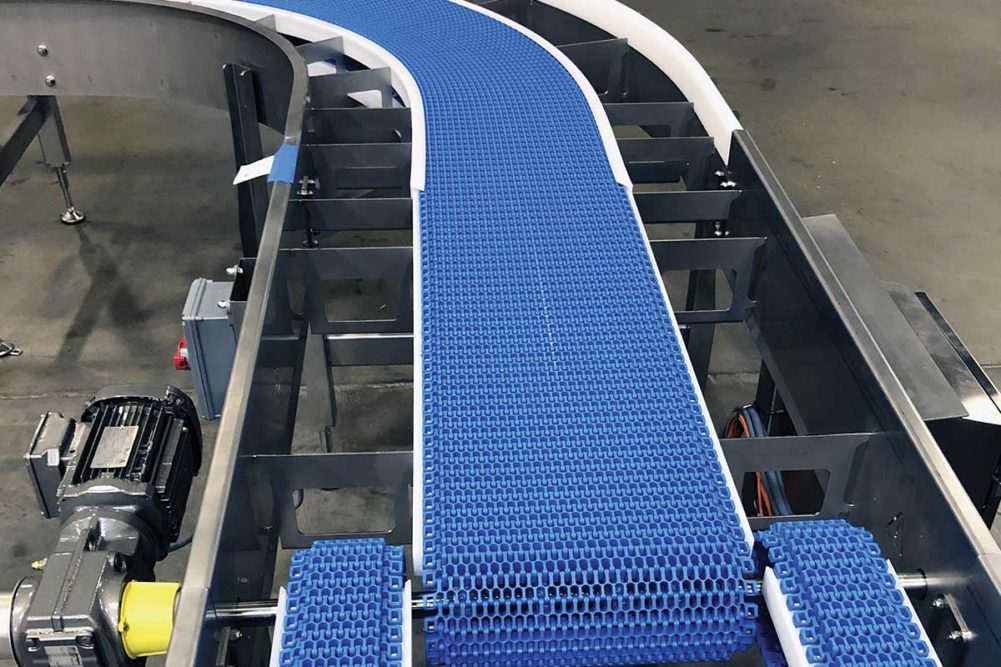Many older facilities are horizontally challenged when it comes to finding new ways to boost capacity. Sometimes relocating to another building does the trick, and it can be less expensive than most people think in the long run.
“If you are planning to move, buy a building with high ceilings because using vertical space is virtually free,” advised Peter White, president, I.J. White Systems. “While the rise of interest rates has everyone thinking hard about investments, many companies are pushing ahead as fast as they can to automate to increase capacity and resolve labor shortage issues. The demand for bakery products remains strong, which is good, but we’re dealing with a new set of challenges from the past.”
Bakers can make up for a building’s restrictive floor space by placing proofers or coolers atop ovens and packaging machines on upper levels, but keep in mind what Isaac Newton learned several centuries ago.
“It’s one of those things that they don’t teach you when you go to engineering school, but you can’t turn off gravity,” said Jonathan Lasecki, director of engineering, Ashworth Bros. Inc. “You always want to be cognizant of it.”
Bakers need to know the frictional properties of pans, peelboards or products moving on the belt. A good rule of thumb, Mr. Lasecki said, is to limit the incline or decline of the conveyor to 10 to 15 degrees.
“When you get beyond that, you may want to look at an added feature like a flight, lift or bucket to push the products up the belt,” he said.
While mezzanines leverage vertical space, they can be costly to build and challenging to convey products up to those areas because the incline is too steep if there’s a lack of floor space. Bob Harrington, vice president of sales and marketing, Capway Automation, suggested using spiral elevator conveyors to transfer products or pans up to a mezzanine, which takes minimal floor space to accomplish the task.
“It all comes down to the product contact surface area, product height and weight,” he explained. “Unfortunately, gravity is not your friend when conveying product up an incline because gravity wants to pull it back down. Friction surfaces built into conveyor belts allow you to convey up greater inclines because they increase friction to reduce product slippage.”
Another issue to consider is belt pull, or the force that is placed on the belt surface due to weight, support structure friction, angle of incline and gravitational pull.
“It is important to not exceed above 80% of the belting material’s specified belt-pull limitations when designing conveyors,” Mr. Harrington advised.
In high-speed bread and bun plants, moving pans along an incline and decline can be extremely difficult because they are heavy, hot and often oily, noted Jeremy Shall, bakery/snack North America team leader, Intralox.
“People usually use friction-top or rough-top belts to handle pan inclines and declines, but they don’t last long and need to be replaced frequently due to the friction-top wearing off,” he said. “If the incline or decline angle is very steep, plants often have to use large magnet blocks in the conveyors to help. Those magnets are big, heavy, expensive and not easily replaced, and are a safety risk due to the magnet’s strength.”
Mr. Shall added that Intralox can embed rare earth magnets into its ProTrax conveyor belts. He said the magnets are safe to install and hold heavy pans for a long time. For the bakery and snack industry, he said, Intralox also offers its Thermodrive thermoplastic belts that are easy to clean and maintain.
Elevators, lowerators and spiral conveyors, in addition to traditional conveyors, provide other options for going vertical, said Clint Adams, vice president of sales and marketing, CBF Bakery Systems.
“Managing inclines requires careful consideration of product or pan characteristics, which are unique to each application,” he said. “Even release agents or oils used in the process have to be evaluated for how they change the dynamic.”
Mr. White pointed out that bakeries are upgrading their cooling systems, especially those aging racetrack, overhead conveyors for buns. In addition to being costly to maintain, these systems are time-consuming to clean.
“There are a lot of old conveying lines out there that are problematic and constantly need repairs, and many bakeries are having problems finding mechanics to work for them,” he said. “Rather than putting more Band-Aids on old overhead cooling systems, we’re offering new space-saving equipment with fewer transfers that require less maintenance.”
This article is an excerpt from the March 2023 issue of Baking & Snack. To read the entire feature on Conveyors, click here.






